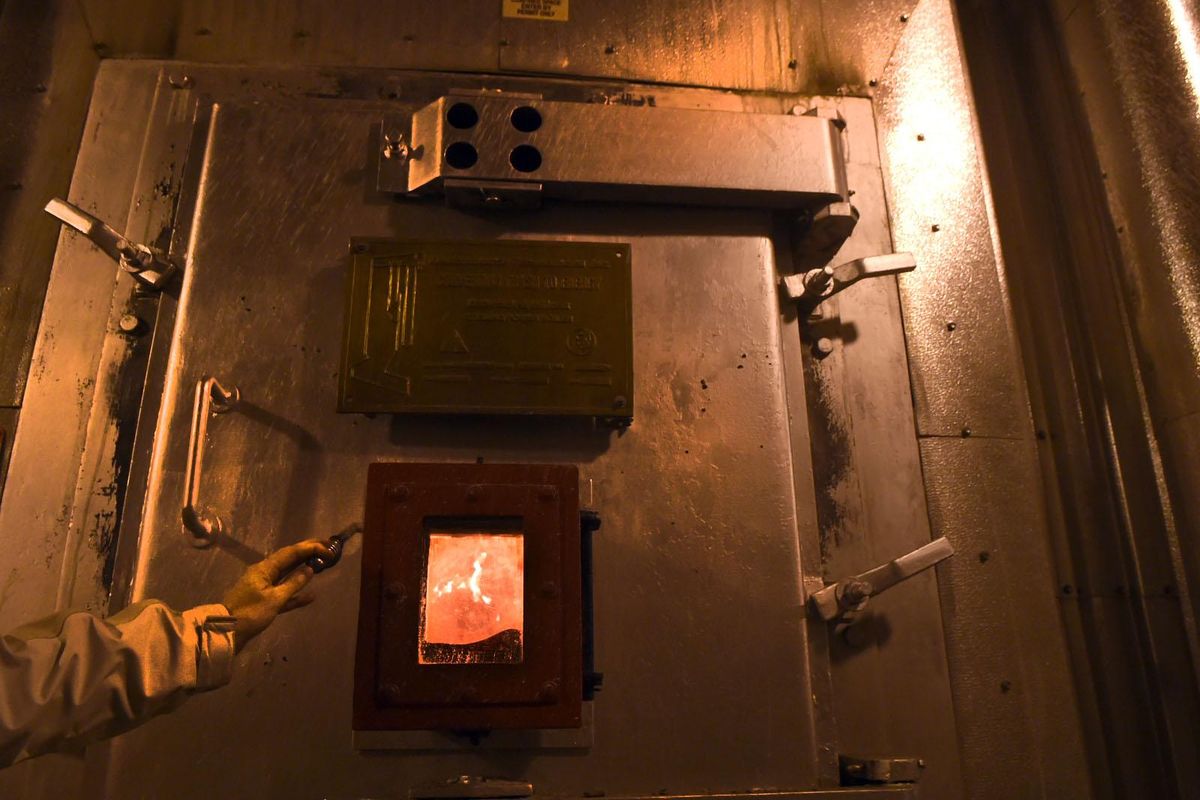Police from throughout the Northwest burn drugs, guns at Waste-to-Energy Plant

On an early afternoon in November 2015, Spokane Police Department officers incinerated 1,000 pounds of confiscated drugs and guns at Spokane’s Waste-to-Energy Plant.
The list of 959 items delivered to the West Plains incinerator is coldly intimate, each one cross-referenced with a case number and briefly described.
“Two greeting cards and envelopes, possible narcotic on glue of envelope,” reads one description. “Ellen’s prescription medications,” reads another, according to logs of items delivered that day obtained by The Spokesman-Review through a records request. Other items collected by police and sent to Spokane for disposal, according to a different day’s record: “successful suicidal’s prescription medications,” and, “one clear plastic bag with Batman logo containing four small orange round tablets with ‘A 14’ inscribed.”
Police departments from across Washington, Idaho and Oregon use Spokane’s incinerator to dispose of confiscated drugs and guns, a practice that’s been going on since 2005. The facility’s twin boilers, operating at 2,500 degrees Fahrenheit, turn illicit goods to smoke that’s rendered harmless by the plant’s state-of-the-art filtration system.
In addition to drugs, the facility burns other materials that need to be destroyed quickly and securely, including recalled food, Antarctic waste and recalled Ikea furniture.
“The key is there is assured destruction,” said Kelle Vigeland, Spokane’s solid waste environmental manager.
In 2015, the Waste-to-Energy Plant incinerated 61.59 tons, or 123,180 pounds, of illicit drugs, pharmaceuticals and guns. On average, the facility burns 900 tons of material every day.
In addition to the Spokane Police Department, the Seattle Police Department, the Washington State Patrol and smaller departments, like the Cheney Police Department and the Coeur d’Alene Police Department, incinerate drugs and guns in Spokane.
The Washington State Patrol also destroys guns and drugs at a Vancouver metal foundry.
There are only a handful of waste-to-energy plants in the West – including one in Oregon and two in California – which is why Spokane receives drugs from police departments as far flung as Pendleton, Oregon.
In May 2015, that police department incinerated a load of narcotics and guns weighing 400 pounds at the Spokane facility.
April Westby, environmental engineer for the Spokane Regional Clean Air Agency, receives a report every six months from the Waste-to-Energy facility detailing “Special Handling Loads.”
The use is not controversial. There’s no more environmental impact or public health concern over burning items such as a, “large hockey bag containing 23 vacuum-seal bags of marijuana” than there is any other kind of waste, Westby said.
“I don’t think it’s so different from the typical type of waste,” she said. “It (the facility) is designed to burn a wide range of waste.”
Added Westby, “This is more about how it’s handled. They need to have it gone.”
Brooke Beeler, communications manager for the state Department of Ecology, said, “Environmentally speaking, whether it goes to a landfill or whether it’s incinerated, it doesn’t make a difference as long as it’s done properly.”
Drugs, guns and other items are incinerated in one of two boilers that are each nine stories tall. Each boiler can burn about 400 tons of refuse in 30 to 60 minutes, reaching temperatures as high as 2,500 degrees.
According to Spokane police records, assigned officers randomly select a number of items to verify their contents prior to disposal. Then they weigh a smaller number of items, usually five, to check that they weigh the same as when they were filed as evidence.
“We are very grateful and very fortunate to have that capability here,” Spokane Police Department Maj. Eric Olsen, who oversees the program, said of the Waste-to-Energy Plant. “I know there are agencies that are not close to waste-to-energy plants and really make the effort to transport because there really is no other way to guarantee their disposal.”
After the officers have entered the plant, they load the drugs directly onto a grappling hook and watch as the load is dumped into the “burn pot” and the operator drops a load of nondrug garbage on top.
According to the agreement between the city and the police department, the police pay $177.40 per ton, which covers the additional staffing necessary to oversee the burn.
The facility has been burning drugs since at least 1999, Olsen said. Although the Spokane Police Department incinerates some guns at the plant, it disposes of most confiscated weapons at a local foundry, Olsen said.
“We make them so that they are useless chunks of metal again,” he said.
Metal from guns incinerated at the plant, like all metal that goes through the facility, is salvaged after the burn and recycled.
A spokeswoman for the regional Drug Enforcement Administration office said the agency disposes of pharmaceutical drugs at the facility, as well as large quantities of marijuana. In July 2015, the DEA incinerated “one van load of marijuana” weighing 860 pounds at the Waste-to-Energy Plant.
The DEA ships all other illicit drugs to a laboratory in San Francisco, where they are tested and eventually destroyed.